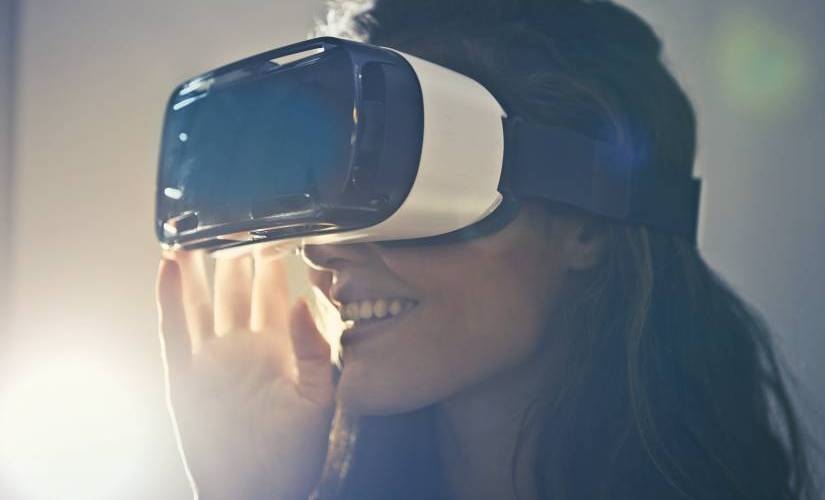How to Use Technology to Engage Your Customer’s Senses

Marketing a product or service has never been more complex. Consumers are interacting with brands across more disparate channels than ever before. At the same time, every single market is bloated with products — more than 30,000 new consumer products launch each year, 95% of which are destined to fail.
So how can any marketing team hope to rise above the din and help its product get noticed? By building an experience that goes beyond the visual. Multisensory experiences help strengthen the emotional power of brand interactions while solidifying those experiences in customers’ minds.
The more senses you can harness at once, the more customers feel connected with your brand.
Sensory experiential marketing can viscerally engage consumers, affecting behaviors and causing them to develop strong emotional connections to your brand. The coordination of sight, sound, taste, touch, and scent technology can transform the consumer experience for the better.
Tech-Based Memory
What exactly is the importance of sensory marketing, and how can it make a brand more memorable?
For one, the connections between multisensory experiences and improved recall are well-documented. A Harvard Business School study found that providing research subjects with pencils scented with tea tree oil massively helped them recall information they were asked to memorize — even two weeks later.
Brands can build powerful associations that intensify a customer’s memory of the product and create positive associations of the sensory marketing experience. New developments in technology only make this experience easier to achieve.
Tech-enabled sensory marketing allows brands more significant control over how and when they interact with customers.
Whether it’s via scent, lighting, or music, technology enables more targeted experiences at peak times and allows for control that never existed before. Everything from hue lights to precise controls of the intensity of a scent or sound can build unique, unforgettable experiences for customers.
Making Sense of the Senses
How can brands use technology to reach customers’ senses and build customer experiences that help them stand out in the marketplace? Try a few of these ideas on for size:
1. Keep your stimuli on-brand.
No matter what sense you’re trying to engage, the biggest challenge is ensuring that the stimulus creates the right psychological response in customers. The value of sensory marketing for brands is instant brand recognition — without the need to display your logo. Remember Intel’s iconic five musical note chime? This simple yet effective auditory effect evokes the brand’s association with sleek, forward-thinking, and intelligent design — all primary tenets of Intel’s core offerings.
Ultimately, sensory marketing should be able to stand alone and still be recognizable to customers.
If marketers absorb and integrate sensory experiences that are authentic to their brands and then inject them into their customer interactions, it’s an easy challenge to overcome.
2. Create personalized experiences for customers.
Even though your brand’s sensory marketing should be consistent and aligned with your brand’s values, strive to create individualized experiences for customers. After all, 73% of consumers prefer brands that personalize their experiences. Any action that makes your audience feel you’re speaking directly to them will elevate your perception in the market.
Saks Fifth Avenue accomplished this through in-store installations that allowed visitors to see how various hairstyles and makeup would look on their faces. This use of artificial reality, or AR, technology has been a massive success for Saks since its 2017 launch, driving more and more customers to these personalized salon experiences.
3. Incorporate both digital and physical channels.
Even a fantastic in-person experience can only reach a certain number of people. An experience spanning both physical and digital channels, however, leads to better overall customer experiences. In the previous example, Saks was able to layer AR on top of the physical world to create dynamic experiences.
Similarly, Marriott leveraged VR and AR technology to transport potential customers to vacation destinations across the globe. Combining visuals with audio, the company gave users a sensory experience of real-life Marriott properties to encourage them to book a stay at one of the brand’s hotels. The customers’ experiences in both the virtual and physical worlds combined for a stronger connection with the brand.
4. Leverage cloud connectivity.
Creating an immersive experience requires extensive control — preferably behind the scenes so that consumer interactions are uninterrupted.
Here’s where cloud-based systems provide real value: Imagine having remote access to lessen the intensity of a scent that’s getting too visceral of a response or to activate light and music cues based on customer behavior.
Another plus to cloud-enabled technology is that it can notify you if something goes wrong. Smart products can provide 24/7 automated alerts, so you are always aware of any issues that arise. Automated alerts apply to everything from lighting systems to the latest in scent technology. Don’t let technical difficulties and minor malfunctions get in the way of fantastic customer experiences.
It’s time to provide customers with experiences they’ll never forget. Using all five senses to amplify and enhance customer immersion will forge a brand connection that’s impossible to beat.
The post How to Use Technology to Engage Your Customer’s Senses appeared first on ReadWrite.
(20)